Bok Choy
$4.95
Brassica Rapa
- Seed Count 50
- Fast Growing
- Annual
In stock
Description
Bok Choy is an essential choice for gardeners seeking a quick-growing Asian vegetable. It features short, broad, and thick pure white stalks paired with dark green, glossy leaves that have a slightly savoyed texture.
Not only is this vegetable highly nutritious and flavourful, but it’s also incredibly easy to cultivate. Bok Choy makes an excellent substitute for cabbage or spinach, catering to both home and market growers’ needs.
You can enjoy Bok Choy at any stage of its growth—harvest it early for tender baby leaves or let it mature for thick and succulent white stems.
This non-heading variety forms clusters of 8 to 12 crisp white stalks with nearly round, smooth, glossy green leaves.
As China’s favorite vegetable, it can be used in countless ways, whether raw or cooked, and is perfect for “cut and come again” harvesting from seedling to full maturity.
| Method: Sow direct | Soil Temp: 21°C - 30°C |
| Cool Mountain: Mar - May | Position: Full sun |
| Arid: Apr - Aug | Row Spacing: 30cm |
| Temperate: Mar - May | Planting Depth: 3mm |
| Sub Tropical: Mar - May | Harvest: 45 Days |
| Tropical: Apr - Aug | Plant Height: 40 cm |
Basics
- Capsicum (sweet/bell Capsicum) thrives in warm, sunny gardens.
- Plant them in a spot with full sun (6+ hours) and rich, well-drained soil.
- Prepare the bed by removing weeds and digging in plenty of compost or aged manure.
- Use mulch around plants to retain moisture and suppress weeds.
Seed Trays vs Direct Sowing
Seedling Trays:
- Raise seeds in pots or trays filled with seedling mix, keeping them warm (16-35°C) and moist.
- This protected start speeds germination and gives plants a head start on weeds and weather.
- You’ll use fewer seeds and get sturdy seedlings for an earlier crop.
- The downside is extra effort and cost (pots, mix, heat source) and you must harden-off seedlings before planting out.
Direct Sowing:
- Plant seeds 3mm deep in the garden soil 50cm between plants, 60–100cm once it’s warm and frost-free.
- Direct sowing is simpler and cheaper (no trays or special mix), but germination is slower and more vulnerable to cold, pests or heavy rain.
- Capsicum seeds can take 1–3 weeks to sprout at 16–35°C.
- Ensure the soil stays evenly moist (not waterlogged) during this time.
In short: use trays if you want the best germination and an early start; sow direct if you prefer simplicity and have already warm conditions.
Planting and General Care
Timing & Spacing:
- Plant or transplant capsicum after all danger of frost has passed.
- In tropical/subtropical areas, Capsicums can even fruit year-round, but in cooler zones treat them as an annual summer crop.
Soil:
- Use well-drained, fertile soil rich in organic matter.
- Work in compost or aged manure before planting.
- Capsicums prefer a slightly acidic to neutral pH (~6.0–7.0).
- In pots, use at least ~40L per plant.
Watering:
- Water deeply and regularly, so the soil stays evenly moist.
- Check soil moisture by pushing a finger 4–5cm down; water when that layer is just dry.
- Water in the early morning or late afternoon to minimize stress.
- Avoid wetting the leaves, which can encourage fungal disease.
- Mulch around plants to keep roots cool and reduce evaporation.
Fertilising:
- If the soil was well-prepared, you may need little extra feed.
- Otherwise, apply a balanced (e.g. 10-10-10 NPK) slow-release fertilizer at planting.
- Once flowers and fruit start, give a liquid tomato or vegetable fertilizer every few weeks according to label directions.
- This supports heavy fruiting. Avoid excessive nitrogen late in the season, as it can reduce fruit set.
Staking & Pruning:
- Capsicum plants can get top-heavy with fruit. Stake or cage them when planting.
- A simple sturdy stake beside each plant works – gently tie the main stem (e.g. with soft string) as it grows.
- This prevents wind damage and keeps fruit off the ground.
- Remove any low or damaged leaves to improve air flow.
- Many gardeners also pinch out a few early flower buds when plants are young – this encourages stronger vegetative growth and heavier later yields.
- Overall, little pruning is needed beyond this.
Pest & Disease Management:
- Monitor plants for pests like aphids, caterpillars, slugs/snails, and chilli thrip.
- Hand-pick pests or use organic sprays if needed.
- Practice good hygiene: remove weeds and crop debris.
- Rotate capsicum/solanaceous crops to a different spot each year to reduce disease pressure.
- Common diseases include blossom-end rot (from inconsistent watering or low calcium) and fungal spots.
- Regular watering and mulch help prevent blossom-end rot.
- Crop rotation and not overcrowding plants also reduce problems.
Chilli Thrips: What They Are & How to Deal With Them
- Chilli thrips (Scirtothrips dorsalis) are tiny, slender insects that can cause big problems in home veggie patches—especially for capsicum, chilli, eggplant, and tomato plants.
- You might not see them easily (they’re less than 2mm long!), but the damage is easy to spot as leaves curl or look bronzed and scarred, buds drop off, and fruit can become deformed or scarred.
- These pests feed by piercing plant tissue and sucking out the juices, which leads to silvery or brown patches on leaves and distorted growth.
- They tend to hang out on the newest growth, flower buds, or the undersides of leaves—so grab a magnifying glass and check these spots first if your plants are looking stressed.
What You Can Do:
Prevention is key:
- Start clean – Avoid bringing in infested seedlings or cuttings.
- Attract beneficial bugs like lady beetles, lacewings, and predatory mites—they’ll help keep thrip numbers down.
- Plant flowers like alyssum, marigold, or dill nearby to draw in the good guys.
If they show up:
- Prune affected areas early to stop the spread.
- Hose them off gently with water to dislodge thrips from foliage.
- Apply insecticidal soap or horticultural oil, covering all leaf surfaces, especially underneath. Repeat weekly as needed.
- Rotate your crops each year to disrupt their lifecycle.
Tip: Thrips love hot, dry conditions—so keep your plants well-watered and mulched to reduce stress and deter infestations.
Companion Planting with Capsicum
Good companions:
- Herbs & Flowers: Basil, dill, parsley, coriander, chamomile and other aromatic herbs as they attract beneficial insects and may repel aphids or whiteflies. Garlic, onions, chives as their strong scent deters many pests. Marigolds, nasturtiums, borage, lavender as these flowers lure pollinators and trap pests (marigolds are famous for nematode control).
- Vegetables: Carrots, lettuce, spinach as they occupy shallow roots and don’t compete much with Capsicums. These can provide light ground cover under Capsicum plants. Tomatoes are sometimes planted alongside Capsicums (both like similar conditions) but be aware they share some pests/diseases so give them space and rotate beds regularly.
- Fruits: Strawberries and cucumbers have been noted as decent neighbours (shallow roots and shade from cucumber leaves can protect Capsicums).
Bad Companions
- Other heavy feeders or close relatives.
- Do not grow next to eggplants, potatoes or tomatoes in succession, as they share pests/diseases.
- Stay away from beans/peas and plants like fennel or dill, which can inhibit Capsicum growth.
- Squash and pumpkins (deep-rooted cucurbits) can out-compete Capsicums for nutrients.
- In short, pair Capsicums with light-feeders and pest-deterring plants, and keep them apart from other nightshades and big gourds.
Seed Saving
Saving your own Capsicum seeds is easy if you follow a few simple steps:
Select plants:
- Pick the healthiest plants with strong, typical fruit.
- If growing multiple types, isolate them (e.g. bag flowers or keep 20m+ apart) to prevent cross-pollination.
Harvest ripe fruits:
- Wait until Capsicums are fully ripe on the plant which is usually when they’ve changed to their final colour and just start to soften or wrinkle.
- Allowing fruits to over ripen a little ensures the seeds are mature.
Extract seeds:
- Cut the Capsicum in half and scoop or twist out the central core.
- Scrape out the seeds and remove as much of the inner flesh and pith as possible.
- Rinse the seeds in clean water to wash off any remaining pulp which helps them dry cleanly.
Dry seeds:
- Spread the seeds in a single layer on paper towels or a clean plate in a dry, shaded place.
- Let them dry completely over several days.
- They’re ready when you can crunch a seed in your fingers and it snaps rather than bends.
- Moisture is the enemy of seed storage, so make sure they feel fully dry.
Store seeds:
- Transfer the dried seeds to a paper envelope or small jar with a tight lid.
- Label with variety and date.
- Store in a cool, dark, dry spot (a refrigerator works well).
- Properly stored Capsicum seeds remain viable for about 3–4 years, so you’ll have plants for many seasons.
Growing Conditions
Pak Choy prefers cool to mild weather, making it ideal for:
- Spring & Autumn (best seasons)
- Winter (in warmer regions)
- Summer (only in cool climates)
Ideal Soil:
- Well draining, rich in organic matter (compost or aged manure)
- pH 6.0–7.5 (slightly acidic to neutral)
- Keep soil consistently moist (mulch helps)
Sunlight:
Full sun (6+ hours) in cooler months
Partial shade in hot summers to prevent bolting
Sowing Pak Choy: Trays vs. Direct Sowing
Starting in Seed Trays (Indoors/Protected)
Best for:
- Cold climates (early start)
- Pest prone areas (snails, slugs)
- Controlled germination
Steps:
- Fill trays with seed raising mix.
- Sow seeds 3 mm deep, 30 cm apart.
- Keep moist (use a spray bottle).
- Germination: 5–10 days at 21–30°C.
- Transplant when seedlings have 3–4 true leaves (2–3 weeks).
- Harden off for 3–5 days before planting out.
- Spacing: 30cm apart in garden beds.
Pros:
✔ Better germination control
✔ Protects from pests
✔ Extends growing season
Cons:
✘ Transplant shock risk (handle gently)
Direct Sowing (Outdoors)
Best for:
- Warmer regions (QLD, NSW, WA)
- Fast growing autumn crops
Steps:
- Prepare soil (loosen, add compost).
- Sow seeds 5mm deep, 10cm apart (thin later).
- Water gently (avoid washing seeds away).
- Thin seedlings to 20–30cm apart when 5cm tall.
Pros:
✔ No transplant shock
✔ Faster growth (no recovery time)
Cons:
✘ Vulnerable to pests (slugs, birds)
✘ Less control over conditions
Companion Planting for Pak Choy
Pak Choy benefits from companions that deter pests, improve soil, or provide shade.
Good Companions:
- Beans fix nitrogen in soil
- Carrots loosen soil, no competition
- Celery deters cabbage moths
- Dill attracts beneficial insects
- Garlic/Onions repel aphids & pests
- Lettuce provides shade for Pak Choy in summer
- Mint deters flea beetles
- Nasturtiums are a trap crop for aphids
Bad Companions:
❌ Brassicas (cabbage, broccoli) – Compete for nutrients, attract same pests
❌ Strawberries – Can harbor slugs
Seed Saving Guide for Pak Choy
Pak Choy is a biennial (flowers in 2nd year), so seed saving requires overwintering plants or selecting bolted ones.
Steps to Save Seeds:
- Select Plants: Choose healthy, bolt resistant plants.
- Let it Flower: Allow 1–2 plants to bolt (produce yellow flowers).
- Pollination: Pak Choy crosspollinates with other brassicas (isolate by 800m or bag flowers). Hand pollinate by brushing flowers gently.
- Seed Pods: After flowering, pods form (like mini pea pods).
- Harvest Seeds: Wait until pods turn brown and dry. Cut stems, hang upside down in a paper bag to catch seeds.
- Clean & Store: Crush pods, sieve out seeds. Store in a cool, dry place (paper envelope or jar). Label with date & variety. Seed Viability: 4–5 years if stored properly.
Common Pests & Problems
- Aphids – Spray with soapy water or encourage ladybugs.
- Cabbage Moths – Use netting or plant mint/garlic.
- Slugs/Snails – Beer traps or crushed eggshells.
- Bolting – Plant in cooler months, provide shade.
Harvesting Pak Choy
- Baby leaves: 3–4 weeks.
- Full heads: 6–8 weeks.
Final Tips for Success
✅ Water consistently (avoid drought stress).
✅ Use mulch to retain moisture.
✅ Rotate crops to prevent disease buildup.
Growing Conditions
Climate:
- Bok Choy prefers cooler conditions. In Australia, spring and autumn are the ideal seasons for planting. During high summer temperatures, Bok Choy may bolt (flower and produce seeds) prematurely, leading to bitter leaves.
Soil:
- Bok Choy excels in well-draining, fertile soil with plenty of organic matter. The ideal pH is between 6.0 and 7.0. If your soil is heavy clay or sandy, amend it with compost or well-rotted manure to enhance fertility and drainage.
Planting Bok Choy
Starting Seeds Indoors:
- If you want to get a head start, sow seeds in seed trays or pots indoors about 4-6 weeks before the last frost. Keep the trays in a warm, but not hot, location with plenty of light.
Direct Sowing:
- For direct sowing, select a well-prepared garden bed. Sow seeds about 3 mm deep and space them 10-15 cm apart. Once seedlings are a few inches tall, thin them to allow for adequate space between plants (20-30 cm apart).
Care and Maintenance
Watering:
- Bok Choy requires consistent moisture. Water deeply once or twice a week, allowing the top inch of soil to dry out slightly between waterings. Avoid letting the soil become waterlogged.
Sunlight:
- Bok Choy grows best in full sun but can tolerate partial shade, especially during the hotter months. If you live in a particularly warm area, providing some shade during the afternoon can help reduce stress on the plants.
Fertilisation:
- Fertilise Bok Choy with a balanced fertiliser or one high in nitrogen, especially during the early growth stage. It is helpful to apply liquid fertiliser every few weeks to boost growth.
Mulching:
- Applying mulch around the plants can help maintain soil moisture, suppress weeds, and keep the soil temperature stable.
Companion Planting
Good Companions:
- Garlic and Onions: Their strong scent can deter pests that may harm bok choy.
- Carrots: They can help aerate the soil while not competing for nutrients.
- Radishes: They grow quickly and can help deter certain pests.
- Beets: They have similar nutrient needs and grow well together.
Plants to Avoid:
- Strawberries: They can attract pests that may also harm bok choy.
- Tomatoes: These can compete for nutrients and are prone to similar diseases.
- Brassicas: Other members of the brassica family (like cabbage and broccoli) can attract the same pests.
Harvesting Bok Choy
Timing:
- Bok Choy is typically ready to harvest 7 to 8 weeks after planting, depending on the variety and growing conditions.
Harvest Method: You can either:
- Harvest the entire plant by cutting it at the base, or
- Selectively harvest outer leaves, allowing the inner leaves to continue growing. This method can extend your harvest period.
Pest and Disease Management
Bok Choy can be susceptible to various pests and diseases. Here are some common issues and their management:
Pests:
- Aphids: Tiny green or black insects that suck plant sap. Control with insecticidal soap or using a strong spray of water.
- Cabbage Worms: Caterpillars of moths that feed on leaves. Hand-picking, using row covers, or introducing beneficial insects like ladybugs can help control them. Also try Dipel, an organic solution that is cheap to buy.
- Flea Beetles: Small jumping beetles that create holes in leaves. Row covers and neem oil sprays can deter them.
Diseases:
- Downy Mildew: Fungal disease that causes yellowing of leaves. Ensure good air circulation and avoid overhead watering.
- Cabbage Root Maggots: These pests attack the roots. Crop rotation and soil enrichment can deter them.
Additional Tips
- Companion Planting: Consider planting Bok Choy alongside plants like garlic, onions, and radishes, which can help deter pests.
- Crop Rotation: Avoid planting Bok Choy (or other Brassicas) in the same location year after year to minimize disease and pest buildup in the soil.
- Storing: Freshly harvested Bok Choy can be kept in the refrigerator for about a week. Wrap it in a damp paper towel and place it in a plastic bag to maintain moisture.
Postage Charge
Orders under $30 attract a $4.95 shipping charge. Orders $30 and above have free shipping.
Order Times
Seed orders are normally dispatched within three business days. You will receive an email when seeds are mailed out.
Postage Days
Seeds are mailed out Monday to Friday at 1pm. Except for the Friday of long weekends.
Postage Times
WA 2-3 Days: SA,NT 3-5 Days: NSW, ACT, QLD, VIC: 5-7 Days
Carrier
We use Australia Post Letter Postage for the majority of orders
Not only are our seeds packed in recycled paper envelopes, we keep the theme going when we post out website orders. To protect your seeds from moisture and the letter box munchers (snails), we use a very special plastic free material made from plants. They are then put into recycled mailing envelopes. Green all the way 💚🌿

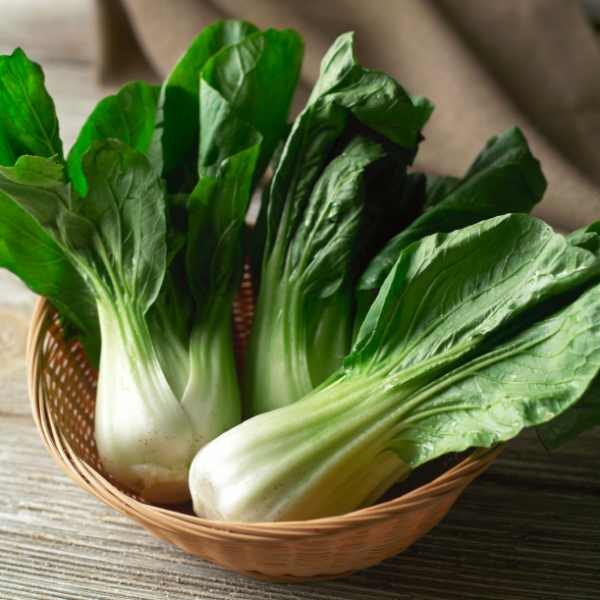


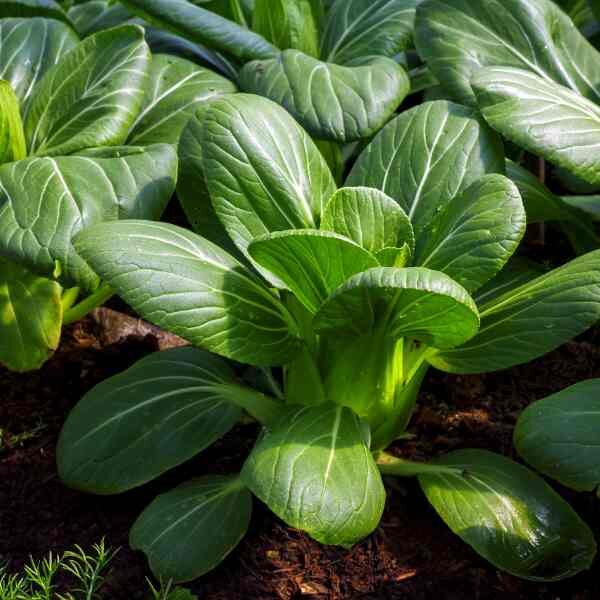
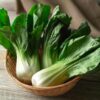
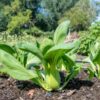
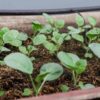



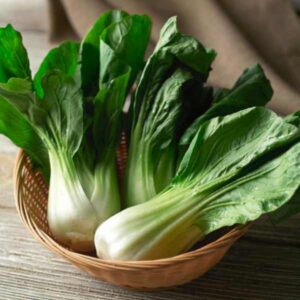
Reviews
There are no reviews yet